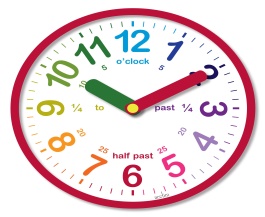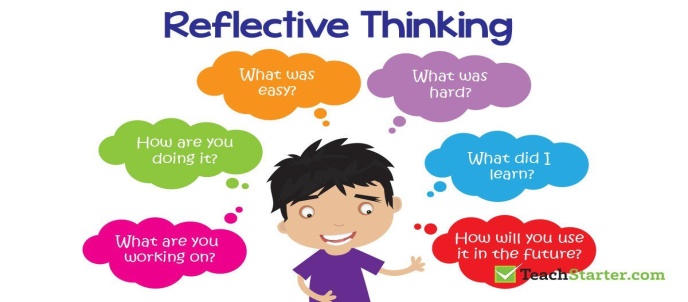
Shortterm plan: term 2
|
Unit: 3Treasure and heritage |
Lesson 17 |
||
|
Teacher name: |
|
||
|
Date: |
|
||
|
Grade: 4 |
Number present: |
absent: |
|
|
Lesson title |
Treasure Maps 1-2 |
||
|
Learning objectives |
4.2.3.1 give short, basic description of people and objects on a limited range of general and some curricular topics begin to describe past experiences on an increasing range of general and some curricular topics 4.4.1.1 plan, write and check sentences with support on a range of basic personal, general and some curricular topics |
||
|
Lesson objectives |
Learners will be able to: - talk about Kazakhstan's natural treasures and I I cultural heritage - read about a treasure hunt.
|
||
|
Value links |
Family – Family values are moral and ethical principles of typical family life, including sacrificing for loved ones, putting your loved ones first, and keeping your loved ones at the centre of your thoughts and actions. |
||
|
Plan |
|||
|
Stages / Time |
Teachers actions |
Students actions |
Assessment criteria |
Resources |
|
Beginning of the lesson Warming-up
3 min. Pre-learning «Brainstorming» method 7 min. |
Organization moment : 1.Greeting. Ask about the weather. The teacher sets the lesson objectives, letting students know what to anticipate from the lesson. Warming up Where are you from? How old are you? What color is it? How many students are there in class? What day of the week today? Hand out the completed Progress Report Cards for the previous module and ask the pupils to file them in their language. Lead – In
|
The aim: To develop pupils speaking skills and create friendly atmosphere Efficiency: By wishing each other they feel better and feel the support of others Students of the class are listed. Students' attention is drawn to the lesson. Students say different words from the picture •Learners remember previous lesson vocabulary •Learners answer the questions What time do you get up every morning? What time do you go to school? What do you do after the lesson? |
The teacher to assess learners for their ability. “Good job! Well done!” Formative Assessment
Good job! Descriptor: - remembers the lesson passed Point 1 Assessment criteria make basic statements related to personal information, peopleand objects on familiar topics and a treasure hunt |
Pictures worksheet Picture |
|
Middle of the lesson Presentation part. 30 min |
Ex:1 P:37 • Ask the pupils to look at the pictures on p. 34 and have a picture discussion. Elicit anything the pupils may know about them. (e.g. Do you know what a dombra is? Can you play a dombra?). Explain the activity. Go through the sentences and elicit/explain any unknown words. The pupils answer the questions orally first, then in writing. Allow the pupils some time to complete the activity. Check their answers. Ex: 2 P: 37 • Put your pen in the book, write and say: There's a pen in the book. Underline the word in bold. The pupils repeat after you. Follow the same procedure and present the rest of the prepositions (out of, in front of, up, down, behind, opposite, on, under). • Refer the pupils to the pictures and have a picture discussion. Ask the pupils if they know what a treasure hunt is and elicit answers. Read aloud the text while the pupils follow in their books. Alternatively, you can ask the pupils to read it aloud. Explain the activity. Go through the questions and elicit/explain any unknown words. Allow the pupils some time to read the text silently and complete the activity. Check their answers. Conclusion during the lesson some tasks differentiated by outcomes of the students and by their abilities. |
• learnerslook at the map and answer the question ANSWERS 2 Kaindy Lake 3 Apples 4 The Bayterek Monument 5 Sherkala 6 Singing Sand 7 A dombra 8 An eagle • learnersread and answer. Write in your notebook. ANSWERS 2 On 29th September. 3 11 4 In the park. 5 6 6 Behind the tree. 7 In a box opposite the |
Descriptor: -understand general idea - complete the activity T
Self assessment
Differentiation:«Verbal support» method is used to help Ss use new words in the sentences. Descriptor: -read aloud the text - answer questions Total: 3 point -Make CCQ questions Yes / No |
Card Worksheet Students book |
|
End of the lesson 5 min |
FEEDBACK Learners provide feedback on what they have learned at the lesson. Ex: P: Home task: Write the days |
|
Poster Success
|
|
жүктеу мүмкіндігіне ие боласыз
Бұл материал сайт қолданушысы жариялаған. Материалдың ішінде жазылған барлық ақпаратқа жауапкершілікті жариялаған қолданушы жауап береді. Ұстаз тілегі тек ақпаратты таратуға қолдау көрсетеді. Егер материал сіздің авторлық құқығыңызды бұзған болса немесе басқа да себептермен сайттан өшіру керек деп ойласаңыз осында жазыңыз
4 grade lesson plans smiles 2 term толық
4 grade lesson plans smiles 2 term толық
Shortterm plan: term 2
|
Unit: 3Treasure and heritage |
Lesson 17 |
||
|
Teacher name: |
|
||
|
Date: |
|
||
|
Grade: 4 |
Number present: |
absent: |
|
|
Lesson title |
Treasure Maps 1-2 |
||
|
Learning objectives |
4.2.3.1 give short, basic description of people and objects on a limited range of general and some curricular topics begin to describe past experiences on an increasing range of general and some curricular topics 4.4.1.1 plan, write and check sentences with support on a range of basic personal, general and some curricular topics |
||
|
Lesson objectives |
Learners will be able to: - talk about Kazakhstan's natural treasures and I I cultural heritage - read about a treasure hunt.
|
||
|
Value links |
Family – Family values are moral and ethical principles of typical family life, including sacrificing for loved ones, putting your loved ones first, and keeping your loved ones at the centre of your thoughts and actions. |
||
|
Plan |
|||
|
Stages / Time |
Teachers actions |
Students actions |
Assessment criteria |
Resources |
|
Beginning of the lesson Warming-up
3 min. Pre-learning «Brainstorming» method 7 min. |
Organization moment : 1.Greeting. Ask about the weather. The teacher sets the lesson objectives, letting students know what to anticipate from the lesson. Warming up Where are you from? How old are you? What color is it? How many students are there in class? What day of the week today? Hand out the completed Progress Report Cards for the previous module and ask the pupils to file them in their language. Lead – In
|
The aim: To develop pupils speaking skills and create friendly atmosphere Efficiency: By wishing each other they feel better and feel the support of others Students of the class are listed. Students' attention is drawn to the lesson. Students say different words from the picture •Learners remember previous lesson vocabulary •Learners answer the questions What time do you get up every morning? What time do you go to school? What do you do after the lesson? |
The teacher to assess learners for their ability. “Good job! Well done!” Formative Assessment
Good job! Descriptor: - remembers the lesson passed Point 1 Assessment criteria make basic statements related to personal information, peopleand objects on familiar topics and a treasure hunt |
Pictures worksheet Picture |
|
Middle of the lesson Presentation part. 30 min |
Ex:1 P:37 • Ask the pupils to look at the pictures on p. 34 and have a picture discussion. Elicit anything the pupils may know about them. (e.g. Do you know what a dombra is? Can you play a dombra?). Explain the activity. Go through the sentences and elicit/explain any unknown words. The pupils answer the questions orally first, then in writing. Allow the pupils some time to complete the activity. Check their answers. Ex: 2 P: 37 • Put your pen in the book, write and say: There's a pen in the book. Underline the word in bold. The pupils repeat after you. Follow the same procedure and present the rest of the prepositions (out of, in front of, up, down, behind, opposite, on, under). • Refer the pupils to the pictures and have a picture discussion. Ask the pupils if they know what a treasure hunt is and elicit answers. Read aloud the text while the pupils follow in their books. Alternatively, you can ask the pupils to read it aloud. Explain the activity. Go through the questions and elicit/explain any unknown words. Allow the pupils some time to read the text silently and complete the activity. Check their answers. Conclusion during the lesson some tasks differentiated by outcomes of the students and by their abilities. |
• learnerslook at the map and answer the question ANSWERS 2 Kaindy Lake 3 Apples 4 The Bayterek Monument 5 Sherkala 6 Singing Sand 7 A dombra 8 An eagle • learnersread and answer. Write in your notebook. ANSWERS 2 On 29th September. 3 11 4 In the park. 5 6 6 Behind the tree. 7 In a box opposite the |
Descriptor: -understand general idea - complete the activity T
Self assessment
Differentiation:«Verbal support» method is used to help Ss use new words in the sentences. Descriptor: -read aloud the text - answer questions Total: 3 point -Make CCQ questions Yes / No |
Card Worksheet Students book |
|
End of the lesson 5 min |
FEEDBACK Learners provide feedback on what they have learned at the lesson. Ex: P: Home task: Write the days |
|
Poster Success
|
|

шағым қалдыра аласыз






















